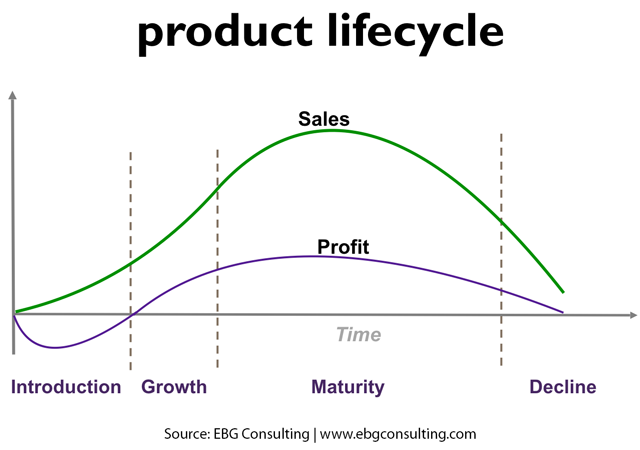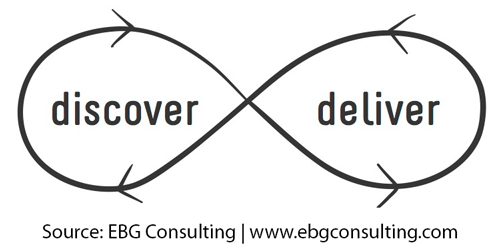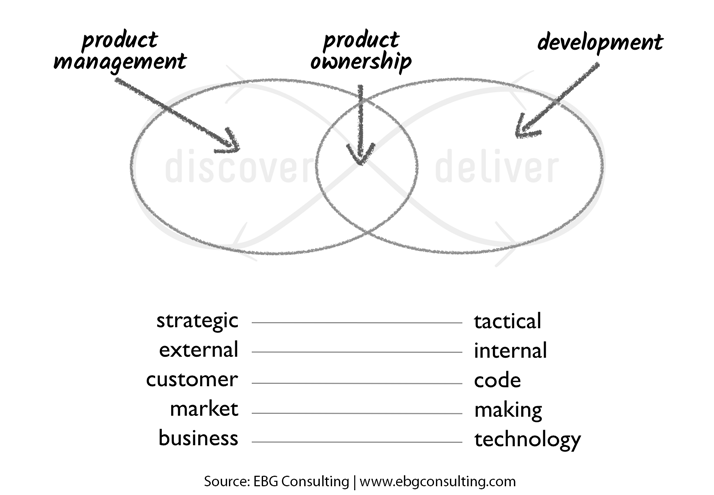Am I a Product Manager or a Product Owner? Part 1
Part 1: Confusion Abounds
With the maturing of the software industry and with an overwhelming acceptance of agility, I am still surprised at the inconsistency and overall confusion between what product managers and product owners do.
On a panel I participated on this very topic, the presenters had different, sometimes contradictory perspectives. [1] Adding to the confusion, organizations struggling to make sense of the roles and job titles can’t rely on conflicting webinars, white papers, or blogs to clarify roles and responsibilities.
Job Title Confusion
In my consulting and coaching business, I frequently encounter this title confusion. One organization I was working with renamed the Product Manager title to Product Owner as they began to transition to agile. Senior executives questioned why Product Owners were participating in strategic planning and roadmapping. Consequently, management switched titles back to Product Manager because the Product Owner title failed to elevate the role enough.
Another organization experienced a similar problem and decided to re-title Product Managers as Technical Product Managers. Yet another company chose to retitle their Product Owners as Associate Product Managers.
A job title is descriptive label for a job. A job role is cohesive set of actions and activities that a person performs in a job. Too often, the job title and roles within a job are conflated.
Let’s examine the work of product management and product ownership.
The Discipline of Product Management
Product management is a discipline with its origins hailing back to the 1930’s in commercial business to consumer (B2C) products and from the world of brand marketing (or “brand men”). [2] Let’s review some basic terminology.
A product in high tech is defined as a software application, system, device, service, or combination that provides value to customers and business partners. [3] A product may itself be a service or include a services component.
Product management is about market research and analysis, product/market fit, competitive intelligence, user and problem discovery, requirements definition, product development, launch, pricing, inbound and outbound marketing, training, servicing, ongoing revision, and retirement of a product.
Today, we see product management exploding as a global discipline. There is an entire ecosystem comprised of books, blogs, bodies of knowledge, conferences, frameworks, pCamps (product camps), training, slack groups, and meetups. Good product management is about the whole product. In Ted Levitt’s “Total Product Concept,” product management is about the expected, augmented, and potential product—not just the generic product. [4]
Value is always derived from the product, not the project.
Unlike time-constrained project or program management, product management attends to the product throughout its entire lifecycle: from introduction, growth, maturity, and to its eventual decline (shown in the figure below). [5]

Products are the heartbeat of most organizations. They are tangible or intangible. They can be singular or a portfolio of products.
Again, products are the source of value.
The Product Manager Role
Some of the actions and activities (i.e. roles) in product management focus on strategic work (discovery), while others are more tactically (delivery) focused. The generic title Product Manager implies the breadth of product management work.
Modern product management has shifted toward applying agile principles, which results in short development cycles, fast feedback, and continuous discovery. A Product Manager implies inclusion of the work of the Product Owner.
The Product Owner Role
The Product Owner is a role in Scrum that is a recent entry into the discipline of product management. The “Scrum Guide” points out that the Product Owner is responsible for maximizing the value of the product resulting from work of the development team and is largely responsible for managing the product backlog. [6]
There is goodness here. No more laborious, time wasting, or document-centric handoffs from a Product Manager to the development team. Rather, a shift to a steadfast focus on removing waste from product development, engaging the development team with the voice of the customer, embracing product thinking (not project thinking), and making the mantra “we optimize product value” a reality.
For IT organizations using products to operate the lifeblood of their own business operations, Scrum’s idea of the Product Owner offers a new way of thinking. Those applications are actually assets and products that require the same care and feeding and lifecycle management as commercial products. And with that, comes product management responsibilities, too. That poses interesting challenges to these organizations, who typically do not have product management functions.
Product Owner as Product Champion
To my mind, Product Owner as a role is confusing and unfortunate. While it is important to have clarity that backlog and value-based decisions belong to a single person, the term “owner” is unfortunately interpreted as being an order giver versus co-creator.
The collaborative nature of product ownership and, for that matter, product management, cannot be overstated. The best act as product champions who collaborate with a diverse community of stakeholders both inside and outside the organization. When collaboration results in great product work, stakeholders become product partners.
As a product champion, you:
- Rally business partners around a clear and concise product vision
- Balance multiple product partners’ perspectives on value
- Define a well-articulated value proposition
- Continually discover and deliver a product that delights customers
- Ensure the product roadmap aligns to strategy to meet business needs
- Make tough decisions and transparently “decide how to decide”
- Empower the development team to act as independently as possible.
This requires people who are empathic and curious and who balance a ruthless drive for specificity with a poetic tolerance for ambiguity. [7]
Product People
Scrum articulates some crucial tactically oriented product management work. The “Scrum Guide” only alludes to the more comprehensive and strategic work of product management. The Product Owner is not just a backlog management jockey. To make value-based backlog decisions, the person doing the Product Owner work has to have a bent toward upstream strategic concerns. As a consequence, product ownership is a subset of product management work.
Because there continues to be confusion about whether we are talking about a role, title, job, or work, many years ago I changed my terminology to refer to anyone working in product management as product people. This opens the conversation to focus on product management work and the goals for that work. It’s the goal, and not the role or title, that matters.
Doing Product Work
The discipline of product management includes tactical and strategic work that encompasses the ongoing discovery and delivery (and eventual demise) of the product.

Let’s look at product work using the context of ongoing discovery and delivery.

As you see in the figure, there are gradients and overlaps on the focus of discovery and delivery. Typically, product management as a discipline is strategic, externally facing, customer- market-focused, and business-focused—attending to continuous discovery to enable continuous delivery of the right product.
The work of product ownership involves straddling these two extremes of product discovery and delivery.
Why the Role of Product Owner is So Critical
The person taking on the responsibility of maximizing the value of the product backlog, the prime responsibility for the Scrum Product Owner role, must study and understand customers, the market, and competition. They need to be attuned to industry trends, aligned to business strategy, and balance a subset of factors for making value-based product decisions. The Product Owner role requires an affinity for figuring out how to “do the right thing.“
At the same time, the Product Owner role requires rich domain knowledge. Or, if she does not personally possess that knowledge, she knows the best people who do so, so she can introduce the development team to them. The Product Owner must ensure the product is built correctly. “Doing it right” includes facilitating Structured Conversations to manage the backlog, provide leadership to product planning and reviews, validate outcomes of releases, oversee discovery, ensure specifications are appropriate, and empower the development team.
In my next blog post, I offer five practical ways to untangle the mess.
References
- Agile New England: . “Agile Product Owner vs. Product Manager”. May 7, 2015. https://www.agilenewengland.org/index.php?option=com_content&view=article&id=355:agile-product-owner-vs-product-manager&catid=59:upcoming
- Eriksson, Martin. “The History and Evolution of Product Management.” Mind the Product. October 28, 2015. https://www.mindtheproduct.com/2015/10/history-evolution-product-management
- Gottesdiener, Ellen and Mary Gorman. Discover to Deliver: Agile Product Planning and Analysis. Boston: EBG Consulting. 2012, 264.
- Levitt, Theodore. “Marketing Success Through Differentiation—of Anything. Harvard Business Review. January 1980. https://hbr.org/1980/01/marketing-success-through-differentiation-of-anything.
- Kotler, Philip and Kevin Keller. Marketing Management. 14th ed. Pearson. 2011.
- ‘The Scrum Guide.” Scrum Guides. November 2017. http://www.scrumguides.org/scrum-guide.html.
- Gottesdiener, Ellen. “5 Ways to Recognize a Great Product Manager.” EBC Consulting (blog). August 1, 2014. https://www.ebgconsulting.com/blog/5-ways-to-recognize-a-great-product-manager.

This added a lot of clarity for me. Thank you. One step further would be a side by side list of the activities associated with the two roles, but the last graphic in the article does make that much clearer.
And thanks for the Agile New England mention 🙂
Ellen thank you for sharing this clear and concise, Insightful information.
You have a wonderful succinct way of describing and explaining things.
I look forward to learning more from you and your posts.
Thanks for your kind words, David.
Yes, in Part 2 I will list some of those activities, and an activity using them that really helps clarify it for your team and organization.
thanks for commenting!
TY, Deirdre.
Thanks Ellen for some helpful thoughts and perspectives.
While I was happy to read we share the opinion that the PO’s role is to “do the right thing”, I take issue that I believe the role of “doing the thing right” belongs to the rest of the Scrum team members as they strive to avoid as much technical debt as possible. The balancing force in this I understand is the Scrum Master who sees that the “things” are built fast. These are the three primary forces at play in Scrum which keep teams in the “sweet spot”.
Hi Mike,
Thanks for your comments.
Can you please clarify: ” take issue that I believe the role of “doing the thing right” belongs to the rest of the Scrum team members as they strive to avoid as much technical debt as possible.”
I am not sure i am following your comments, and the 3 forces. can you clarify?
thanks,
~ ellen
Ellen – Please link to the blog 2 post. Helpful exercises. Thanks!
– Marie
Thanks Marie for the reminder to do that! (done: I provided the link to part 2).
done! let me know if you have any issues accessing it.
glad you like the activities, Marie!
~ ellen
[…] ebgconsulting.com/blog/product-manager-product-owner/ […]